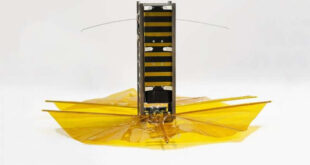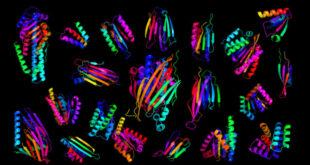A process using human stem cells can generate heart cells belonging to the external layer, the epicardium, according to an international team of scientists from the Pennsylvania State University, the University of Wisconsin, Madison, Leiden University Medical Center in the Netherlands and AstraZeneca in Sweden.

A model highlighting the specification of human pluripotent stem cells (hPSCs) to epicardial lineages by stage-specific modulation of canonical Wnt signaling and the long-term maintenance of hPSC-derived epicardial cells using TGF-?-signalling inhibitors. Image credit: X. Bao et al, doi: 10.1038/s41551-016-0003.
“In 2012, we discovered that if we treated human stem cells with chemicals that sequentially activate and inhibit Wnt signaling pathway, they become myocardium muscle cells,” said Dr. Xiaojun Lance Lian, assistant professor of biomedical engineering and biology at the Pennsylvania State University.
Myocardium, the middle of the heart’s three layers, is the thick, muscular part that contracts to drive blood through the body.
The Wnt signaling pathway is a group of signal transduction pathways made of proteins that pass signals into a cell using cell-surface receptors.
“We needed to provide the cardiac progenitor cells with additional information in order for them to generate into epicardium cells, but prior to this study, we didn’t know what that information was,” explained Dr. Lian, co-author of an article about the research that was published in the journal Nature Biomedical Engineering on Dec. 5, 2016.
“Now, we know that if we activate the cells’ Wnt signaling pathway again, we can re-drive these cardiac progenitor cells to become epicardium cells, instead of myocardium cells.”
The team’s results bring them one step closer to regenerating an entire heart wall.
Through morphological assessment and functional assay, Dr. Lian and colleagues found that the generated epicardium cells were similar to epicardium cells in living humans and those grown in the lab.
“The last piece is turning cardiac progenitor cells to endocardium cells — the heart’s inner layer, and we are making progress on that,” Dr. Lian said.
The authors engineered the human stem cells to become reporter cells, meaning these cells expressed a fluorescent protein only when they became epicardium cells.
“We treated the cells with different cell signaling molecules, and we found that when we treated them with Wnt signaling activators, they became fluorescent,” Dr. Lian explained.
“Another finding is that in addition to generating the epicardium cells, we also can keep them proliferating in the lab after treating these cells with a cell-signaling pathway Transforming Growth Factor Beta (TGF) inhibitor.”
“After 50 days, our cells did not show any signs of decreased proliferation. However, the proliferation of the control cells without the TGF Beta inhibitor started to plateau after the 10th day.”
The team’s novel method of generating epicardium cells could be useful in clinical applications, for patients who suffer a heart attack.
“Heart attacks occur due to blockage of blood vessels,” Dr. Lian said.
“This blockage stops nutrients and oxygen from reaching the heart muscle, and muscle cells die. These muscle cells cannot regenerate themselves, so there is permanent damage, which can cause additional problems. These epicardium cells could be transplanted to the patient and potentially repair the damaged region.”
_____
X. Bao et al. 2016. Long-term self-renewing human epicardial cells generated from pluripotent stem cells under defined xeno-free conditions. Nat. Biomed. Eng 1: 0003; doi: 10.1038/s41551-016-0003
This article is based on a press-release from the Pennsylvania State University.
 #Bizwhiznetwork.com Innovation ΛI |Technology News
#Bizwhiznetwork.com Innovation ΛI |Technology News



